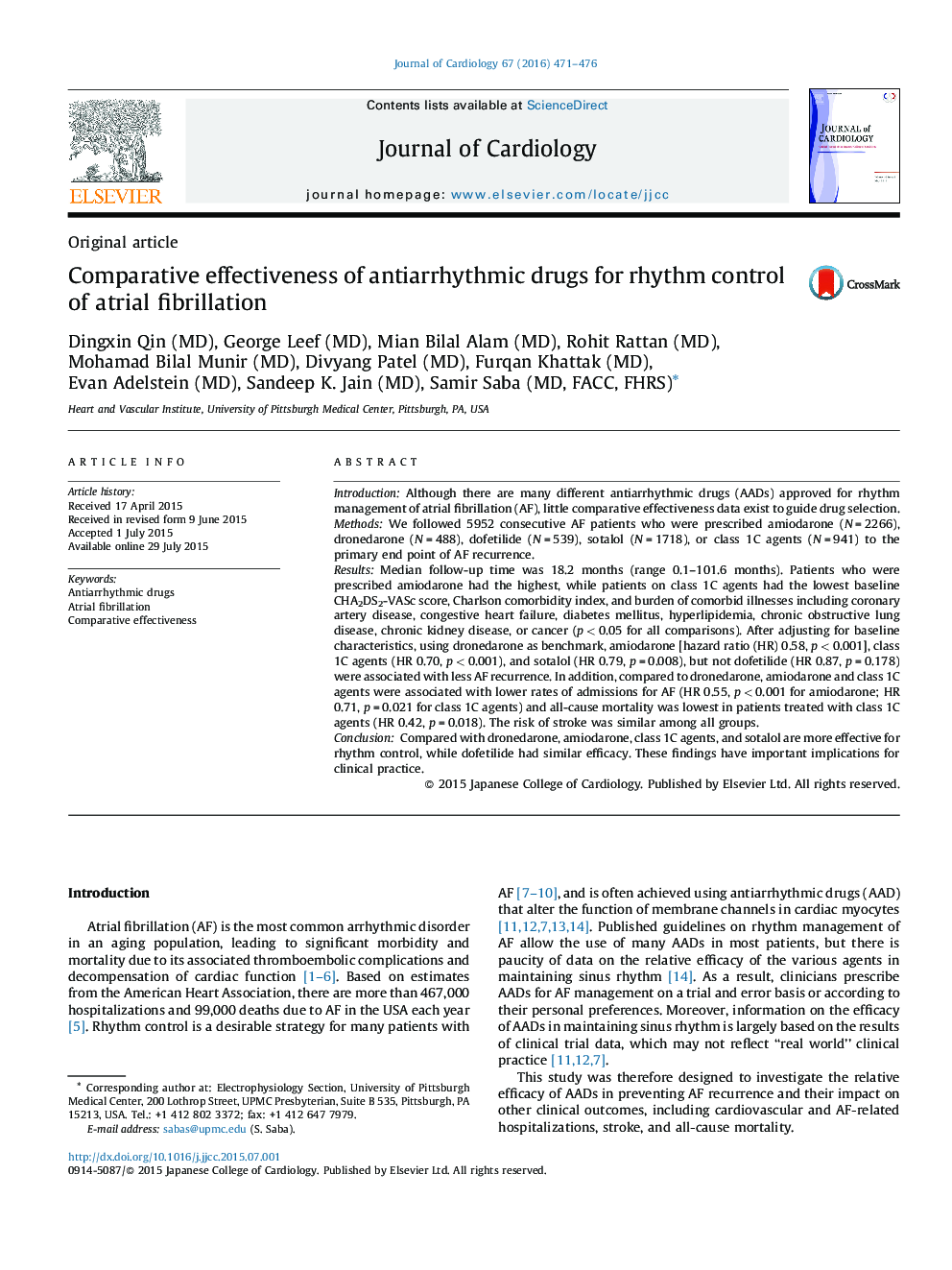| Article ID | Journal | Published Year | Pages | File Type |
|---|---|---|---|---|
| 2962848 | Journal of Cardiology | 2016 | 6 Pages |
IntroductionAlthough there are many different antiarrhythmic drugs (AADs) approved for rhythm management of atrial fibrillation (AF), little comparative effectiveness data exist to guide drug selection.MethodsWe followed 5952 consecutive AF patients who were prescribed amiodarone (N = 2266), dronedarone (N = 488), dofetilide (N = 539), sotalol (N = 1718), or class 1C agents (N = 941) to the primary end point of AF recurrence.ResultsMedian follow-up time was 18.2 months (range 0.1–101.6 months). Patients who were prescribed amiodarone had the highest, while patients on class 1C agents had the lowest baseline CHA2DS2-VASc score, Charlson comorbidity index, and burden of comorbid illnesses including coronary artery disease, congestive heart failure, diabetes mellitus, hyperlipidemia, chronic obstructive lung disease, chronic kidney disease, or cancer (p < 0.05 for all comparisons). After adjusting for baseline characteristics, using dronedarone as benchmark, amiodarone [hazard ratio (HR) 0.58, p < 0.001], class 1C agents (HR 0.70, p < 0.001), and sotalol (HR 0.79, p = 0.008), but not dofetilide (HR 0.87, p = 0.178) were associated with less AF recurrence. In addition, compared to dronedarone, amiodarone and class 1C agents were associated with lower rates of admissions for AF (HR 0.55, p < 0.001 for amiodarone; HR 0.71, p = 0.021 for class 1C agents) and all-cause mortality was lowest in patients treated with class 1C agents (HR 0.42, p = 0.018). The risk of stroke was similar among all groups.ConclusionCompared with dronedarone, amiodarone, class 1C agents, and sotalol are more effective for rhythm control, while dofetilide had similar efficacy. These findings have important implications for clinical practice.
